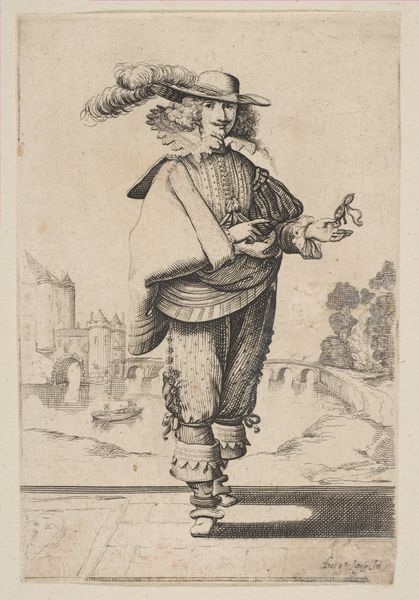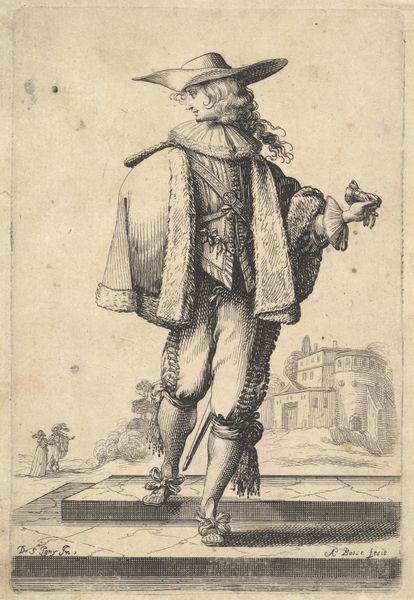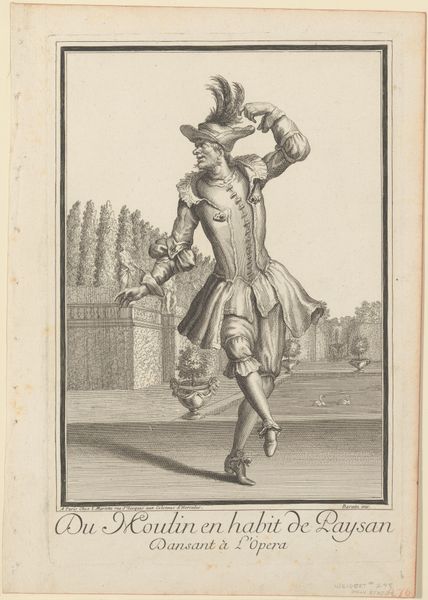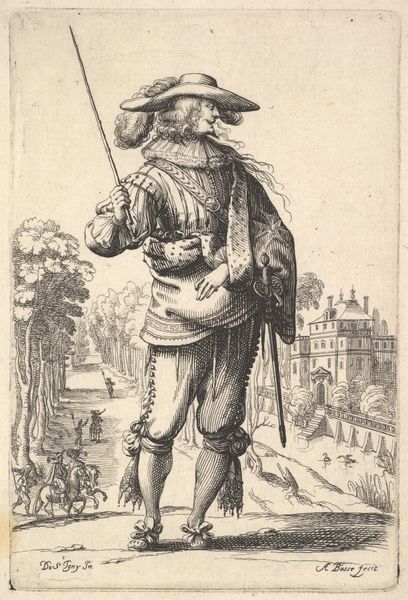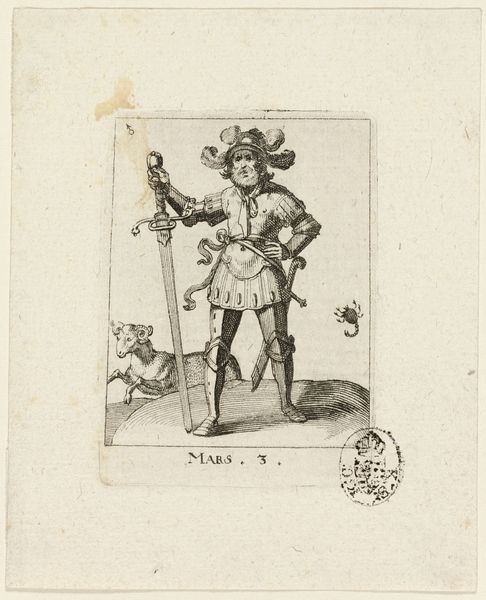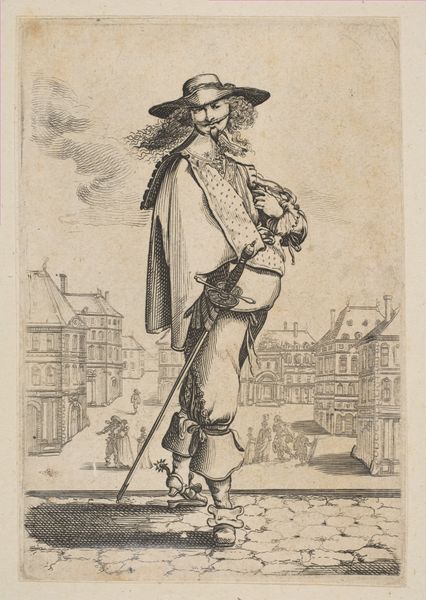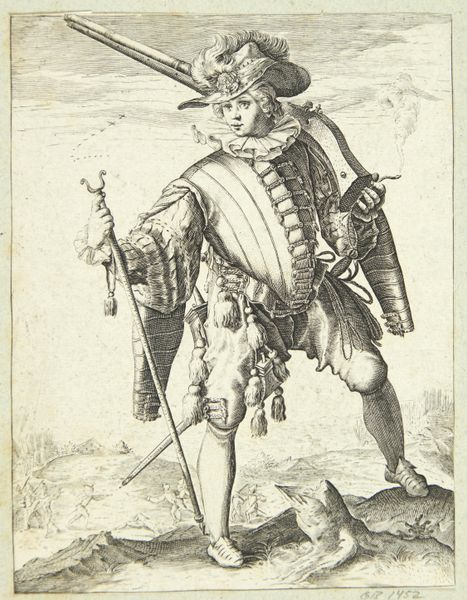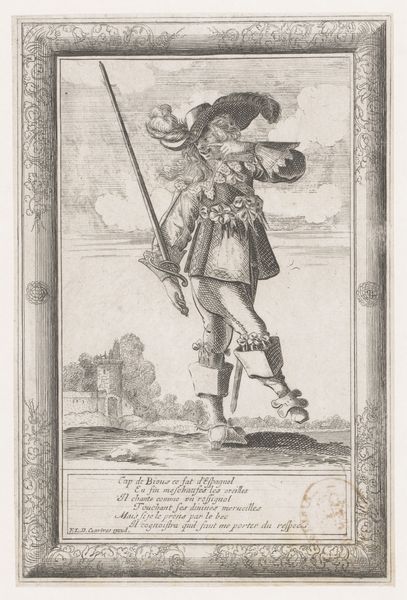
drawing, print, engraving
#
portrait
#
drawing
#
baroque
# print
#
figuration
#
men
#
line
#
cityscape
#
genre-painting
#
engraving
Dimensions: Sheet (trimmed): 5 5/8 × 3 3/4 in. (14.3 × 9.5 cm)
Copyright: Public Domain
Editor: Here we have an engraving from 1629, "Gentleman Holding a Crop," by an anonymous artist, currently held at The Met. It's such a flamboyant portrait; I’m immediately struck by all the details in his clothing and that elaborate cityscape backdrop. What stands out to you about this print? Curator: I’m drawn to the labor and material circumstances behind this piece. Consider the process: the artisan meticulously cuts lines into a metal plate, applying pressure to create an image, each impression requiring skill. It wasn’t fine art in the modern sense but part of a larger print culture, a system for circulating information, fashion, and even political ideas. Editor: So you're saying it was more about mass production than individual expression? Curator: Exactly! This isn’t about the 'genius' of a single artist; it's about how images are made and consumed. Look closely at the depiction of the gentleman. His ornate dress represents accessible markers of status through printed fashion. The cityscape also serves a similar purpose. How can reproducible media serve and disseminate status and social order? Editor: That shifts my perspective. It’s not just a portrait; it's a commentary on 17th-century commodity culture made possible through reproducible techniques. Curator: Precisely. The very act of creating and disseminating prints implicates the artist in a commercial enterprise. It bridges high and low art, blurring boundaries, by emphasizing technique, access, and use value. Editor: So I should think of the print less as art and more as early social media. Curator: An interesting proposition, and perhaps useful in emphasizing that reproducible images participate in constructing identity and power in the public sphere. Editor: I hadn't considered it from that angle. Now, I see the artwork as both documentation and a product of its time, entangled with social status, labor, and materials. Curator: And how the conditions of its creation and circulation influenced what and how it represents.
Comments
No comments
Be the first to comment and join the conversation on the ultimate creative platform.



